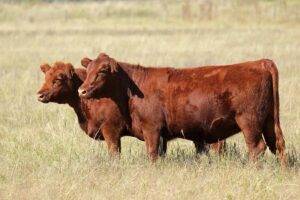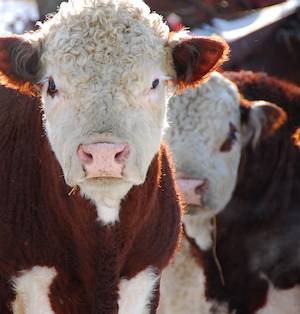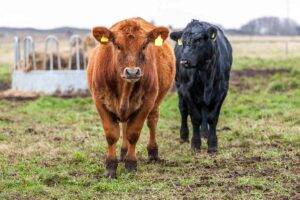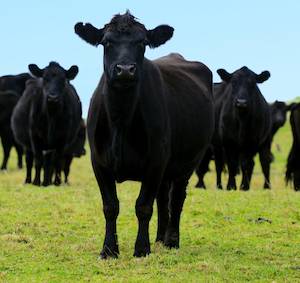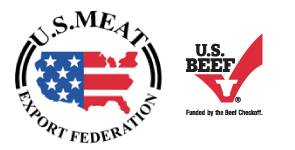Breeds & Feeding
It is believed that all domesticated cattle evolved from a single ancestor, the Aurochs, which is now extinct. Nowadays breeds fall into two main types, Bos indicus and Bos Taurus. The former are adapted to hot climate while the latter – the typical European cattle, are adapted to cooler weather.
Breed influences the crucial parameters of cattle growth rate, reproductive efficiency, maternal ability and end product specification.
Therefore, producers consider key factors such as the production system, market demands, climate, quantity and quality of feedstuffs availability, breed complementarity, and cost and availability of purebred seedstock etc. when making breed selection.
There are over 60 beef cattle breeds within the U.S. Approximately 20 breeds possess the genetics desired for the production of marketable beef.

Cattlemen have a long heritage of balancing the art and science of quality animal care. The cattle industry formalized its first quality program in the late 1970s with the start of “Beef Safety Assurance,” a program designed to help cattle farmers and ranchers ensure their production practices were safe and met consumer expectations.
The program educated farmers and ranchers about the proper use of cattle pharmaceuticals, including honoring government-established withdrawal times (the amount of time that must pass before treated cattle can be sent to market).
The Beef Quality Assurance (BQA) program, the first of its kind in the world, soon followed. BQA was started in 1982 by cattlemen as a proactive, loose-knit, on-farm safety program. It was officially established in 1987 to provide cattlemen with the principles, tools and education to ensure proper cattle care. BQA incorporates current Food and Drug Administration (FDA), Environmental Protection Agency (EPA), and U.S. Department of Agriculture (USDA) regulations as well as Hazard Analysis Critical Control Point (HACCP) principles.
